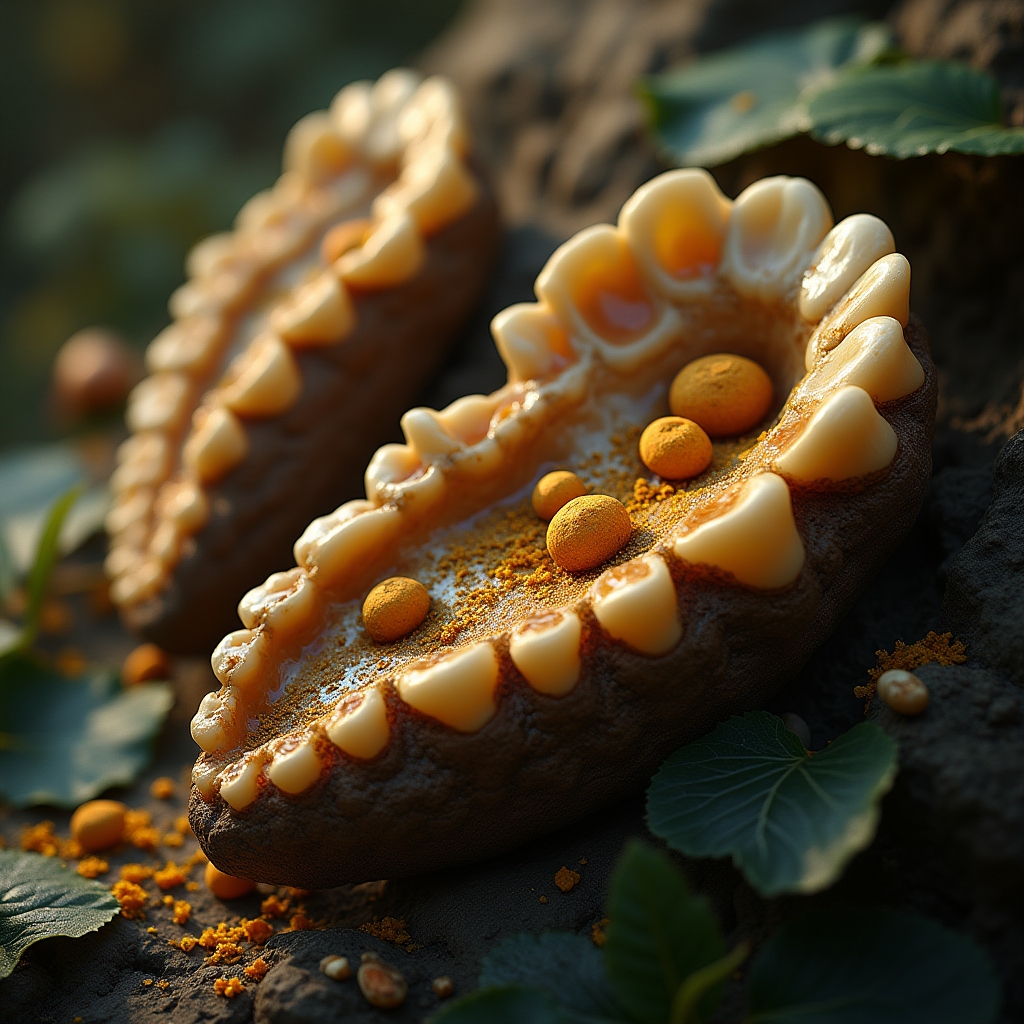Scientists have unearthed a discovery that merges archaeology with chemistry, unlocking secrets hidden in the most unlikely of places – ancient dental plaque. This extraordinary find from a burial site in Thailand provides direct evidence of betel nut chewing, marking the earliest known instance in Southeast Asia.
iN SUMMARY
- 🦷 **Oldest Evidence**: Scientists discovered evidence of betel nut chewing from **4,000-year-old teeth**.
- 🔍 **Novel Techniques**: Researchers used a **breakthrough method** analyzing dental plaque.
- 🌿 **Cultural Rituals**: The findings suggest psychoactive rituals were part of ancient **daily life**.
- 📜 **Pre-Written Records**: This discovery hints at sophisticated practices **before recorded history**.
Uncovering an Ancient Practice
The story of our discoveries in Southeast Asia is as intricate as the patterns of human migration across the globe. This archaeological breakthrough was achieved through an ingenious method developed to analyze the calcified plaque on ancient teeth. By examining 4,000-year-old remains, scientists found evidence of betel nut use, a substance known for its psychoactive properties.
The research was conducted by a team of archaeologists and chemists who combined their expertise to peel back layers of time, revealing the invisible imprint of ancient plant use. This method has not only confirmed betel nut chewing but has opened the door to understanding other aspects of ancient life, such as diet, health, and cultural practices.
The Science Behind the Discovery
The approach used in this discovery involved chemical extraction and analysis of substances trapped within dental plaque, offering a direct view into the lives of ancient peoples. The plaque, essentially remnants hardened over millennia, was analyzed for plant residues that would have been consumed many years ago.
Betel nuts, often chewed with lime and sometimes tobacco, induce a mildly euphoric effect. The discovery that these nuts were used so long ago suggests that cultures in Southeast Asia were engaged in complex social and ritual practices, challenging previous assumptions about the simplicity of prehistoric lives.
According to [Science Daily](https://www.sciencedaily.com/releases/2025/08/250801020102.htm "Original source"), this pioneering method of studying ancient dental plaque could transform our understanding of historical diets and cultural habits, extending our knowledge well beyond the limitations of written records (Science Daily).
Cultural Significance of Betel Nut
In many cultures across the Asia-Pacific region, betel nut holds a significant place in social, cultural, and ceremonial contexts. The act of chewing betel is often tied to welcoming guests, cementing friendships, and participating in spiritual rituals. This discovery reveals that such practices were deeply rooted in human history, far preceding the introduction of writing in the region.
The presence of betel nuts in burial sites hints at their importance in both life and death, perhaps used in rituals to ease the transition into the afterlife or to honor ancestors. This gives us a glimpse into how ancient peoples understood and interacted with the world around them.
A Window Into the Past, A Door to the Future
While our understanding of the past is constantly evolving, discoveries like these highlight the sophistication and complexity of ancient societies. By examining the microscopic world locked within teeth, researchers have been able to glean information that could reshape the narrative of human development in Southeast Asia.
This method of analysis opens up new possibilities for archaeological science, potentially allowing us to uncover the botanical signatures of plants that shaped human history, and to explore the social and environmental factors that influenced ancient cultures.
The Implications for Modern Science
As we look to understand the day-to-day lives of our ancestors, this discovery proves invaluable. It indicates that substances and practices thought to be modern have their roots deep in human history. Such findings not only expand the boundaries of science but also invite us to reconsider the narrative of human culture in light of new evidence.
For scientists, historians, and the curious minds among us, this discovery provides a profound connection to the past. It reminds us of the eternal human spirit of curiosity and exploration and urges us to continue on our quest for knowledge at [iNthacity.com](https://www.inthacity.com "Visit iNthacity for more insights and stories").
Conclusion
What does this mean for our understanding of ancient cultures and their lifeways? How will this knowledge influence current perceptions of cultural practices? The next steps involve continued research, applying these methods to other archaeological finds, and sharing insights across disciplines.
Join the discussion below in the comments section, and become a part of the vibrant [iNthacity community](https://www.inthacity.com/blog/newsletter/ "Join the iNthacity community") where we celebrate discoveries and delve deeper into the mysteries of human history.
Remember that every artifact has a story, much like a smile revealing secrets when the light of science shines upon it.
Disclaimer: This article may contain affiliate links. If you click on these links and make a purchase, we may receive a commission at no additional cost to you. Our recommendations and reviews are always independent and objective, aiming to provide you with the best information and resources.
Get Exclusive Stories, Photos, Art & Offers - Subscribe Today!
























Post Comment
You must be logged in to post a comment.